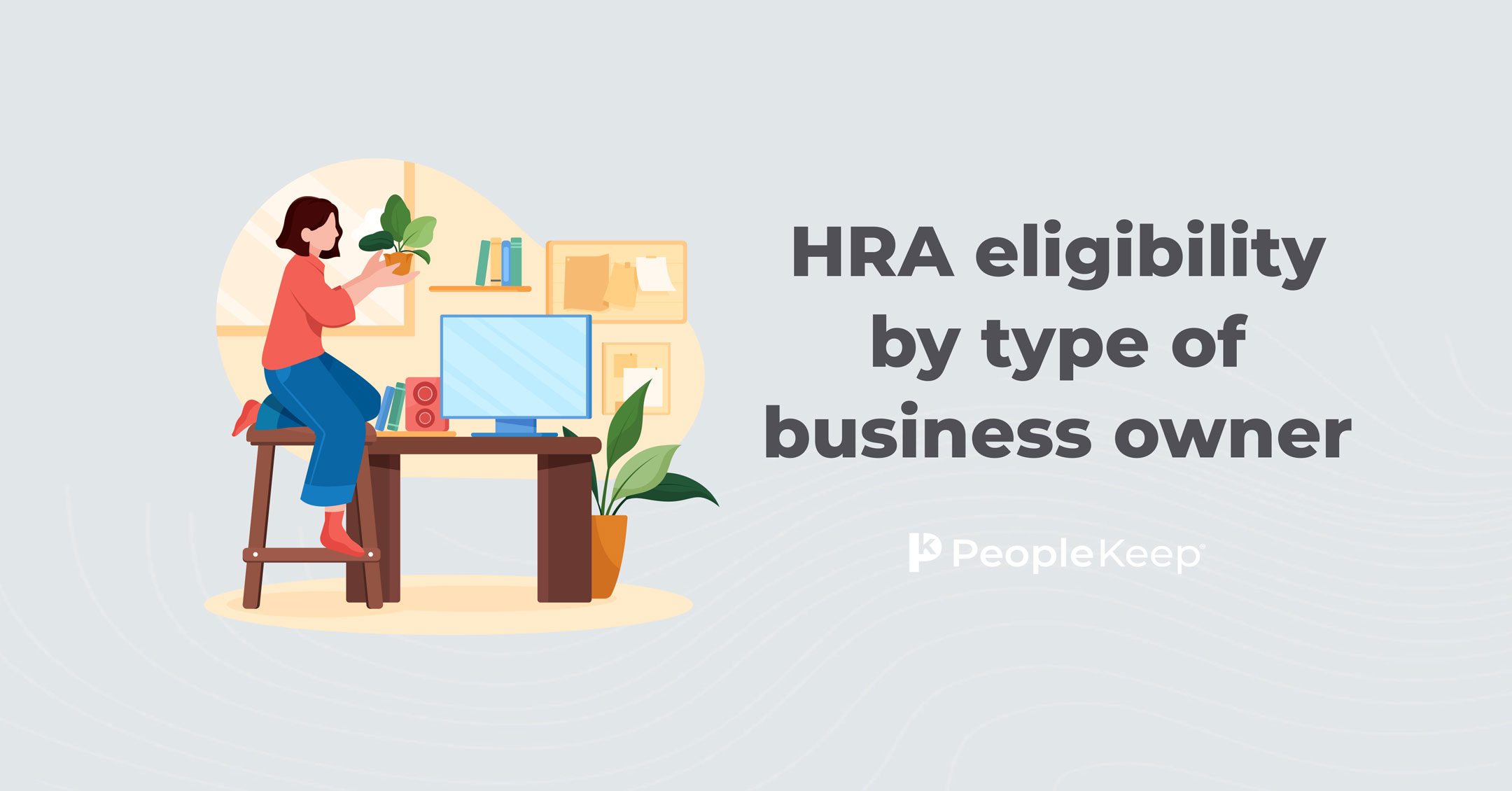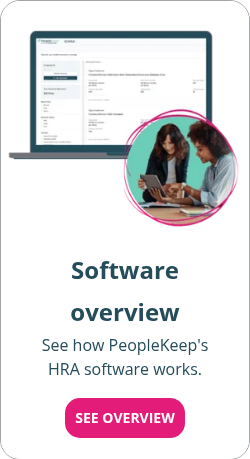Making the switch from group health insurance to an HRA
By Elizabeth Walker on September 29, 2025 at 8:00 AM
When it comes to offering health benefits to your employees, group health insurance is the traditional choice. But it isn’t for everyone. If you’re a small to mid-sized employer, the high costs, unpredictable rate increases, lack of flexibility, and complicated nature of group plans may not be worth the hassle.
Instead, health reimbursement arrangements (HRAs) offer employers and employees an affordable and customizable benefit. Switching from a group health insurance plan to an HRA can feel like a big step. But for many employers, it’s worth it to put your employees’ healthcare choices back in their hands while keeping your costs predictable.
But how do you start making the switch? This article will guide you through each step of the transition so you don’t run into any snags.
In this blog post, you’ll learn:
- Why employers are moving away from traditional group plans and switching to HRAs.
- The step-by-step process of switching from group coverage to a stand-alone HRA.
- Other HRA options if you’re not ready to drop group insurance completely.
Step 1: Choose your HRA
There are several different types of HRAs available to employers. But if you’re switching from group coverage, you’ll likely want to choose a stand-alone HRA. That’s because these HRAs are employer-sponsored benefits that can replace group plans for your workforce.
Stand-alone HRAs allow you to set a fixed monthly allowance that your employees can use to buy health coverage and qualified medical expenses, including individual health insurance premiums. After an employee submits proof of an eligible expense and you approve it, you reimburse them for the cost tax-free up to their set allowance amount.
The two most common stand-alone HRA options are:
- The qualified small employer HRA (QSEHRA): Designed for businesses with fewer than 50 full-time equivalent employees (FTEs), QSEHRAs are a great tax-advantaged option for small businesses. The IRS sets annual maximum contribution limits for the QSHERA. However, there are no minimum limits, and employers can adjust allowances by age or family status.
- The individual coverage HRA (ICHRA): Available to employers of any size, the ICHRA offers more flexibility than the QSEHRA. It has no contribution caps, and employers can customize eligibility and allowances using 11 employee classes. With the right plan design, applicable large employers (ALEs) can also use the ICHRA to satisfy the ACA’s employer mandate.
Step 2: Cancel your group health insurance policy
Your next step depends on the stand-alone HRA you plan to offer. One requires you to cancel your existing group health plan altogether, while the other allows you to keep it with certain restrictions.
Here’s how each works:
- If you’re moving to a QSEHRA, federal rules require you to terminate your group health plan. This includes any group dental or vision plans. You can’t offer both benefits simultaneously, so it’s crucial to align the end date of your group coverage with the start date of the QSEHRA.
- If you’re switching to an ICHRA, you can keep offering a group plan at your organization. But, per federal compliance regulations, you must ensure that employees within the same class aren’t given a direct choice between the ICHRA and the group policy. So, adjust your employee classes beforehand if necessary. Unlike a QSEHRA, you can offer a group vision or dental plan and an ICHRA to the same employees.
To begin the process, contact your current insurance provider. You can contact your insurance company directly to let them know you’d like to cancel your plan, or work with them through a health insurance broker.
You can cancel most group health plans at any time. However, it’s always a good idea to check your plan details first to make sure. The insurance company will want to know the effective date of your cancellation, so have a date in mind before you call.
Give your employees plenty of notice about the cancellation of their group plan and the transition to an HRA so they have time to prepare. Offering an HRA is a qualifying life event that will trigger a special enrollment period. After that, they’ll have 60 days to shop for an individual policy on a public or private marketplace so they can participate in the HRA.
Don’t forget to ask your current insurance provider for official loss of coverage documentation for your employees. They may need to prove their eligibility for the special enrollment period to an insurance carrier before shopping for an individual health plan.
Step 3: Set up your HRA
The next step is setting up your HRA. Whether you choose a QSHRA or an ICHRA, the setup process ensures a smooth and compliant transition for you and your employees.
Here are the steps to get started:
- Choose your start date. Both QSEHRA and ICHRA plans can begin at any time of year, but to prevent gaps in coverage, you’ll want your HRA to start the day after your group policy ends.
- Define eligibility. For QSEHRAs, all full-time W-2 employees are automatically eligible for the benefit. However, if you allow it in your plan details, you can also extend coverage to part-time workers and legal dependents. For ICHRAs, you can vary eligibility rules using employee classes.
- Choose qualified expenses. IRS Publication 5021 and the CARES Act2 outline more than 200 medical services and items that are eligible for reimbursement. However, you may choose to cover only insurance premiums, premiums plus out-of-pocket medical expenses, or limit the list of out-of-pocket costs.
- Set contribution amounts. With a QSEHRA, you must stay within annual federal contribution limits, while an ICHRA allows you to contribute as much or as little as your budget allows. You can also vary contributions by family size and age.
- Create your plan documents. Both types of HRAs require formal documents under ERISA. These include a written plan document, a summary plan description (SPD), a summary of benefits and coverage (SBC), and required employee notices. Typically, you should give employees notice at least 90 days before the plan takes effect.
Get more details on how to set up an HRA by reading our full blog.
Step 4: Work with an HRA administrator
Setting up an HRA can be tricky, but you don’t have to do it alone. Working with an HRA administrator can simplify the process and give you peace of mind that your benefit is compliant. For example, if you sign up with an HRA powered by PeopleKeep, setting up your benefit is as easy as making a phone call!
To start, one of our HRA specialists will ask about your organization, employees, budget, and goals before recommending an HRA that best suits your situation. In most cases, we can help you design and set up your new employer-funded benefit in about 15 minutes. Be sure to include all key leadership and stakeholders on the call so everyone is on the same page.
Here’s what you can expect from working with an HRA administrator like PeopleKeep:
- Guidance on designing benefits that align with your company’s size and budget.
- Automatic creation of compliant HRA plan documents, notices, and employee notifications.
- Streamlined onboarding and offboarding when employee changes occur.
- The ability to compare and enroll in individual health plans within the HRA platform.
- A secure dashboard for submitting, approving, and tracking reimbursements.
- Digital storage of all records to meet federal compliance requirements.
- Ongoing benefit management that typically takes just a few minutes each month.
Before you call, have your computer, employer identification number (EIN), and payment card handy. You’ll also want to ensure you’ve decided how to design your HRA, such as contribution amounts, eligibility rules, or waiting periods for new hires. If you’re unsure, our HRA specialists will guide you through the options.
For larger companies or those with diverse workforces, Remodel Health’s ICHRA+® provides extra hands-on support, advanced compliance tools (including 1094/1095 reporting), premium payment solutions, and enhanced administrative resources.
Step 5: Notify your employees
Clear communication is the most critical part of the process. Most employees will be unfamiliar with HRAs, so explaining the benefit early and often will help prevent confusion.
The last thing you want is for your staff to view switching to an HRA as a downgrade. Because in reality, it’s quite the opposite. Employees should understand that HRAs give them more control. They can choose the health coverage that best fits their needs and cover medical costs their group plan didn’t pay for, such as copays, vision expenses, and smoking cessation drugs.
In addition to the above, make sure your employees know:
- The official start date of their new benefit.
- Who is eligible, and whether any waiting periods apply.
- The monthly allowance amount (and how it may differ by employee class).
- How to shop for and enroll in an individual health plan.
- How premium tax credits interact with the HRA.
- Which healthcare expenses are eligible for reimbursement.
- The process for submitting claims and proof of coverage.
- Who their HRA plan administrator is and how they can contact them.
Timely, transparent updates are key. PeopleKeep will send your employees a formal email notification of their benefit. But we recommend sending an initial email from your HR department so your employees aren’t caught off guard. Follow that with resources such as Q&A sessions with your benefits specialist and written guides so employees feel supported and comfortable.
Step 6: Help your staff choose qualifying health coverage
Once you onboard your employees, they must enroll in qualified health insurance to use their HRA allowance. Those with an ICHRA must have an individual health plan that provides minimum essential coverage (MEC) and minimum value.
Options for ICHRA participants include the following:
- An ACA-compliant individual health plan
- Medicare Parts A and B together
- Medicare Part C
- An ACA-compliant student health plan
- A catastrophic policy (if eligible) from the exchanges
By law, employers can’t recommend specific insurers or plans. However, you can provide helpful tools. Educational materials on the public marketplaces, plan types, provider networks, and metal tiers go a long way for employees unfamiliar with the individual market. If you work with a local broker, share their contact information with your staff.
If you’re working with PeopleKeep or Remodel Health, your employees can compare plans directly from their dashboard and get guidance from licensed benefit advisors. This extra support makes shopping for individual health coverage less overwhelming and stressful.
What if I’m not ready to cancel my group plan?
If you like the familiarity of your group health plan, but still want to offer an HRA, you don’t have to choose between the two. The group coverage HRA (GCHRA), or integrated HRA, is specifically for employers who want to offer a group health plan and an HRA.
By combining your group health plan with a GCHRA, your staff can stay on the group plan they already know while receiving tax-free reimbursements for many out-of-pocket costs the plan doesn’t fully cover, such as copays, deductible expenses, and coinsurance.
A GCHRA works with any group health plan, but it’s beneficial if you offer a high deductible health insurance plan. By covering the higher cost-sharing amounts, the GCHRA can make healthcare more affordable while keeping insurance premiums low. However, only employees enrolled in your employer-sponsored group health insurance plan can use the benefit.
Like the ICHRA, the integrated HRA is highly flexible. There are no contribution limits, and you can tailor eligibility rules and allowances using seven employee classes. You can also define which medical expenses qualify for reimbursement and request that employees submit an explanation of benefits (EOB) to receive HRA claim payments.
Conclusion
Switching to an HRA is more than just changing your health benefit. It’s the first step toward greater flexibility, cost control, and employee satisfaction. Whether you choose a QSEHRA or an ICHRA, the transition can be easy and stress-free for you and your staff if you follow the proper steps.
When you’re ready to make the switch, PeopleKeep by Remodel Health is here to help! Schedule a call with one of our HRA specialists today, and we’ll get your benefit set up and running smoothly.
This article was originally published on June 25, 2012. It was last updated on September 29, 2025.
2. CARES Act
Check out more resources
See these related articles

HRA eligibility by type of business owner
Are you a business owner wondering if you can participate in an HRA? Find out if you meet the eligibility criteria with this comprehensive guide.

What employers need to know about HRA debit cards
Are you considering HRA debit cards for your workers? Find out why they may not be the best option for your company and what alternatives you can explore.

Does an HRA work with Medicaid?
Find out if an HRA can be used with Medicaid. Learn how HRA reimbursements work for employees enrolled in Medicaid and what limitations may apply.



